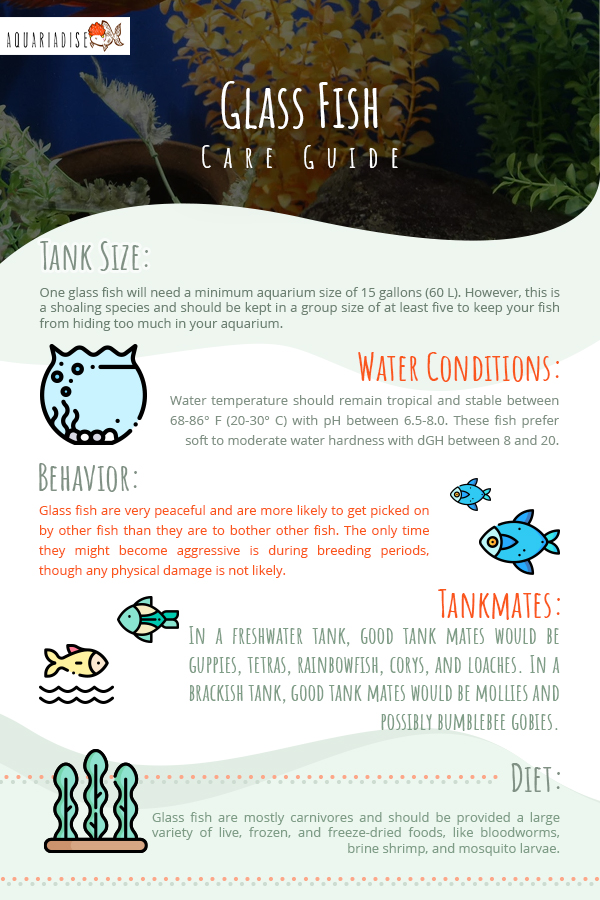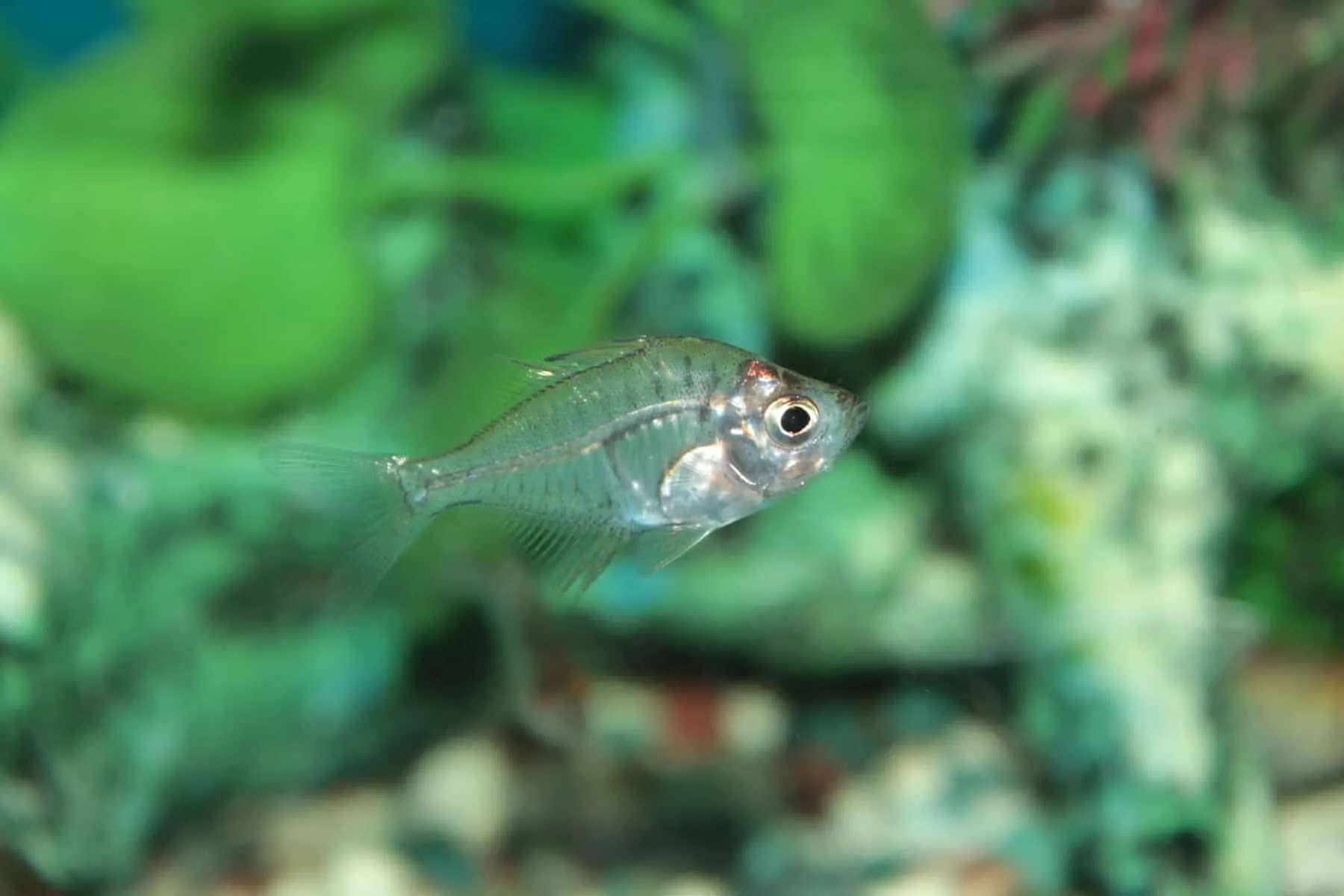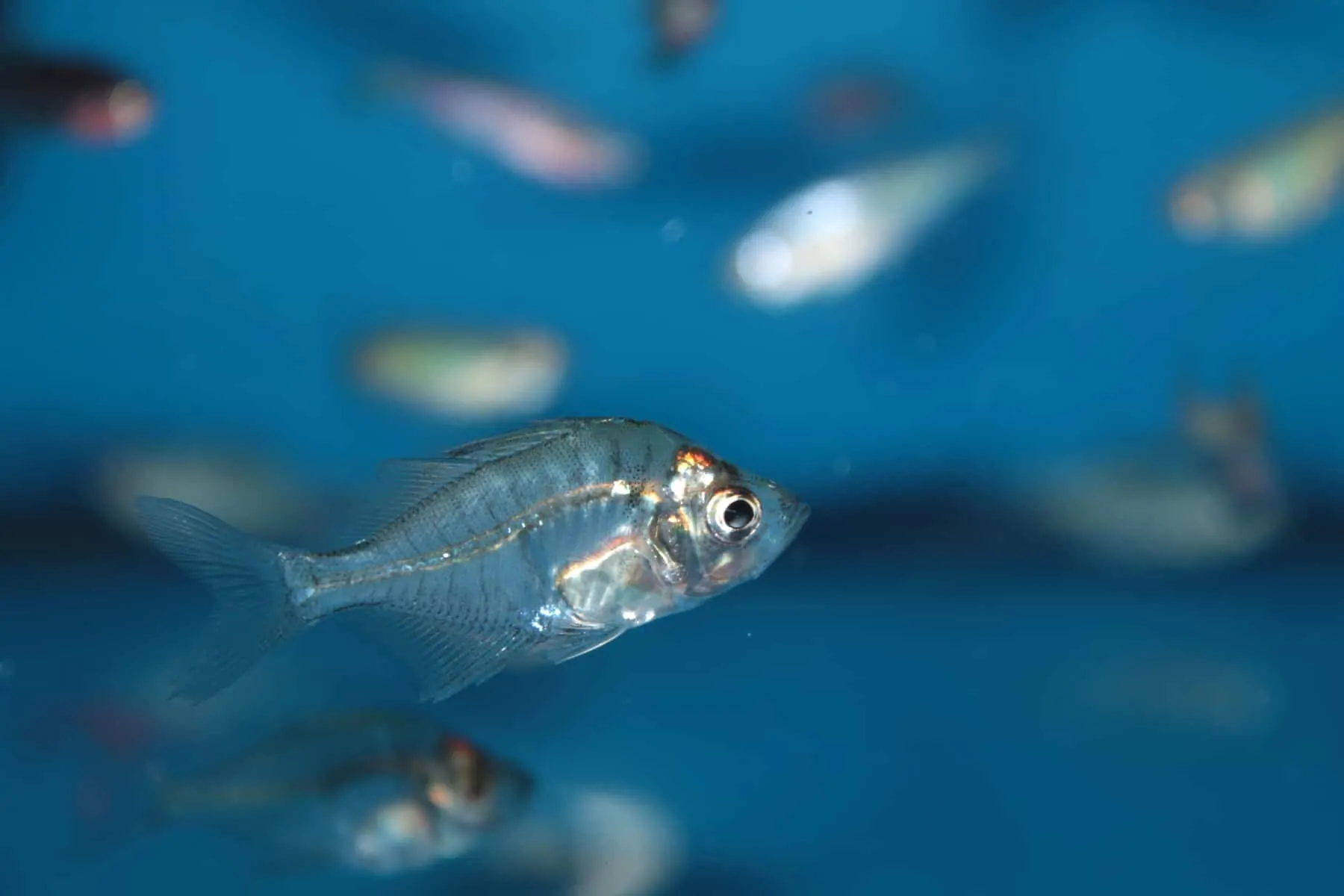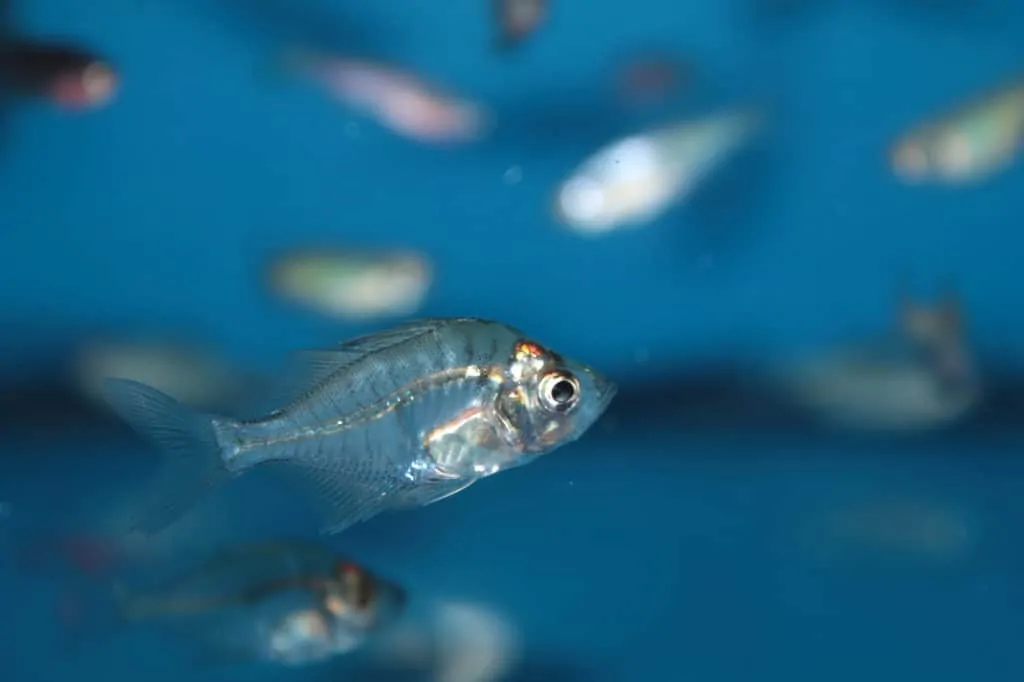Are you looking to fill your fresh water tank with something a little odd? The glass fish, also commonly called the Indian glassy fish, is a perfectly transparent species of fish that likes to shoal together in very bold and active groupings. While it has been widely believed that these aquarium fish are more difficult to care for because of their need for specific brackish water conditions, they will easily acclimate to freshwater tanks just as well and are as easy to keep as most other tropical fish!
Keeping reading to find out everything you need to know about glass fish care and keeping this species in your own aquarium!

Name
Parambassis ranga is commonly known as glass fish, Indian glassy fish, Indian x-ray fish, or Indian glassy perch; however, Parambassis ranga is part of the Ambassidae family while true perch is part of the Percidae family. Parambassis ranga was previously known as Chanda ranga.
Fish that are advertised as artificially colored are usually Parambassis ranga and are also referred to and labeled as disco fish or painted fish.
Natural habitat
Glass fish has a large native range and can be found across most parts of Asia, including Japan, India, Pakistan, Cambodia, Malaysia, Thailand, Myanmar, Nepal, and Bangladesh. These fish prefer slow-moving to standstill waters and can be found in both fresh and brackish water conditions, especially during the rainy season when reproduction is high.
Alone, these fish tend to be shyer and like to stay hidden in thick vegetation. In groups of five or more, you will find them actively swimming around in more open water.
Identification
At first glance, these fish look like a kind of colorless tetra or barb with their high fins, wide-body, and similar size, though they are not related.
Glass fish grow to an adult size of about 3 inches (8 cm) and are almost completely transparent; you can see right down to their bones and internal organs! However, this species has been made victim to commercialized artificial colorization where dye is injected into their body through needles. This is not a sustainable or ethical practice at all, and the fish usually ends up dying shortly after.
The only natural color of Parambassis ranga is transparent, all others should be avoided.
Sexual dimorphism
It is possible to tell your male glass fish apart from your females, especially during breeding periods. Males will usually have a yellow tint to their bodies and develop blue or black edging on their dorsal and anal fins.

Glass fish tank requirements
One glass fish will need a minimum aquarium size of 15 gallons (60 L). However, this is a shoaling species and should be kept in a group size of at least five to keep your fish from hiding too much in your aquarium. To make sure you have enough space for more than one fish as well as other species, an aquarium size of at least 30 gallons (114 L) is recommended.
Water temperature should remain tropical and stable between 68-86° F (20-30° C) with pH between 6.5-8.0. These fish prefer soft to moderate water hardness with dGH between 8 and 20. While it is commonly believed that these fish need brackish water, they are most commonly found in areas of freshwater and acclimate well to both communities’ brackish and freshwater tanks.
Water temperature, pH, and water hardness ranges should be the same for a freshwater aquarium and a brackish aquarium.
A dark substrate will especially make your glass fish pop! Plenty of plants should be added so that your fish has places to hide in your aquarium. Rocks and driftwood may also be added to create a more natural effect. Water flow should not be too strong as these fish come from calm waters.
While these fish are small in size, a group will fill up the middle and lower water column of your aquarium perfectly.
Are glass fish aggressive?
Glass fish are very peaceful and are more likely to get picked on by other fish than they are to bother other fish. The only time they might become aggressive is during breeding periods, though any physical damage is not likely.
Will my glass fish eat my guppies?
No! Think about the size of the glass fish and then think of the size of its mouth. There is no way that a fully grown guppy would be able to be eaten! However, baby guppies could make a quick snack.
You can find our entire care sheet for guppies here.
Glass fish tank mates
Glass fish can be kept with a whole assortment of tank mates, it just depends on if you plan on keeping them in a freshwater aquarium or a brackish one!
In a freshwater tank, good tank mates would be guppies, tetras, rainbowfish, corys, and loaches. In a brackish tank, good tank mates would be mollies and possibly bumblebee gobies.
When stocking your aquarium, make sure that the other fish aren’t overly active and are a similar size.
Glass fish diet
Glass fish are mostly carnivores and should be provided a large variety of live, frozen, and freeze-dried foods, like bloodworms, brine shrimp, and mosquito larvae. Some hobbyists have reported having difficulty getting their glass fish to eat flakes, so first observe if they are accepted before continuing to feed.
Breeding glass fish
Breeding glass fish is not common in the aquarium trade and it has been said that keeping the fry alive is quite difficult. You will know your fish are getting ready to breed when the male develops darker colorations. At this point, remove the male and a couple of females into a different tank that is heavily planted.
At night, do a large water change with warmer water at about 82° F (27.7° C). Females should spawn the next morning, depositing up to 200 eggs on the vegetation. It would be best to remove the adults at this point to prevent them from eating their eggs.
It is likely that the eggs will cultivate fungi, so it is recommended to preemptively treat the water for outbreaks. The eggs will hatch in about 24 hours and become swimming in 3-4 days. Most breeders have difficulty getting their fish to eat as they do not actively search for food and wait for it to come to them. It may be best to feed in large amounts or try target feeding.
Wait until they reach a decent size so that they will not get eaten by other fish before introducing them back into your tank or giving them to another hobbyist.

Conclusion
Parambassis ranga may not be the first fish that comes to mind when setting up a tank, but they’re definitely an interesting choice that you won’t regret. Provide lots of plants, minimal water flow, and a large variety of food, and your fish will thrive.
Never purchase a fish that has been artificially dyed.
If you have any questions about glass fish care or have experience keeping these fish, don’t hesitate to leave a comment below!



Why is my glass fish white and why is it floating around my tank but it breathing it happened when i moved the tank to another location is it because of stress?
It could be stress. It could be problems with water quality. Or it could be a disease. Are you able to test your water parameters?